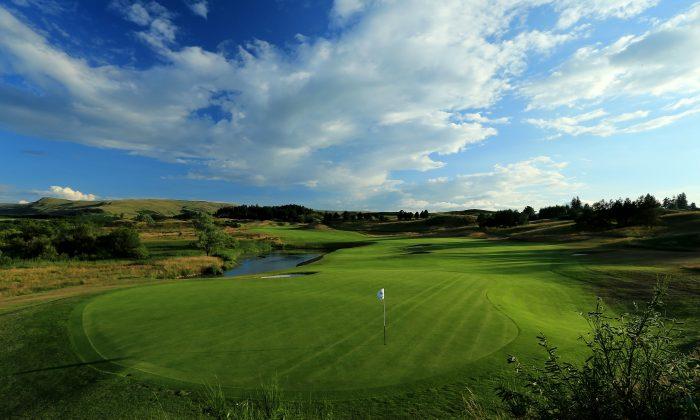AUCHTERARDER, Scotland—One of the unique aspects of the Ryder Cup is that all of the competition is staged through match play. Instead of a cumulative stroke total—as in most professional golf events—the players encounter a “new” match with the start of the next hole. The player or side that wins the most holes ultimately wins the match.
Gleneagles is the home for 63 holes of golf. This week’s matches are being contested on the PGA Centenary Course—opened in 1993 and designed by Jack Nicklaus. The par-72 7,243-yard course will certainly not be confused with the more noted links courses of Scotland, such as The Old Course at St. Andrews or Muirfield—long used for various key events, most notably The Open Championship.
Given the ebb and flow that match plays predictably generates, there will be certain holes on the Centenary Course producing major momentum shifts. Interestingly, although the 18th is a risk-and-reward par-5 which has massive grandstands surrounding it, the probability of matches coming to the home hole are low—only one of six matches in past Ryder Cups get that far. How players fare at critical moments prior to that could well decide the outcome of not only their respective match but which side ultimately takes possession of one of golf’s grand prizes.
*****
Par-4 5th Hole / 461 Yards
Scottish name: “Crookit Cratur”
Named for its twisting nature, the safe play is down the right side where there’s more room off the tee. The issue then becomes a lengthier shot that must traverse a bog that hugs tight to the putting surface on the right. The more daring tee shot is down the left side, but which narrows considerably at 290 yards. Once successfully reached you are awarded with a better approach angle into the green. The green is contoured appropriately and after playing four reasonable holes -- the 5th serves as the wake-up call. Expect pars to win this hole with few birdies made. Pin placements will be likely towards the left rear where the sole greenside bunker is an element to avoid and in the front right nearest to the bog previously mentioned.
Par-5 9th hole / 618-Yards or 564-Yards
Scottish name: “Crook o'Moss”
The name of the hole comes from the source of water for Gleneagles. The interesting aspect will be where the tees are placed. At 618 yards, the hole will likely require three shots to reach. If the tees are placed at the 564-yard mark the possibility for a more daring second shot is doable if wind conditions are also favorable. Going for the green will mean avoiding a frontal pond that is aptly placed to catch any shots that fail to fly all the way to the intended target. The putting surface is narrow with fall-offs to both the left and right sides. Birdies will be needed here and a good number of them will be had.
Par-4 11th hole / 350-Yards
Scottish name: “Laich Burn”
In recent years the drive-able short par-4 has become a major element of professional golf. The risk is clearly present, but the reward can be great if the bold play is made at the tee. In past Ryder Cups held on the European side the most noted of such holes was the 10th at the Belfry held in England several times. The 11th at the Centenary Course provides the possibility of such things—depending upon the placement of the tees. At its full length the likelihood of players opting to challenge the green will be nil as the percentage play will likely mean a long iron or hybrid to the middle of the fairway and a short wedge into the putting surface. The green is small and quite contoured but numerous birdies will be made here. The main question is will the Euro side have the tees moved up for one or more of the days of competition? If that happens, expect plenty of churning stomachs as the players will need to think long and hard on whether a bold play from the tee is worth taking.
Par-4 15th hole / 463-Yards
Scottish name: “Ochil Sicht”
When players come to the 15th, the matches will be likely at a critical time. This long par-4 requires a quality tee shot, marrying sufficient length and pinpoint accuracy. Going full-throttle with the driver will certainly test the nerves here. The approach is no less demanding. The putting surface has four different levels, is rather narrow and quite deep. Hitting the green alone will not suffice as the contours can feed the ball in different directions without the surest of strokes made. Securing a win at the 15th could very well serve as the springboard to winning one’s match.
M. James Ward, a member of Golf Writer’s Association of America (GWAA) and past member of Met Golf Writer’s Association (MGWA), has reported on golf’s grandest events since 1980 in a variety of forums.





Friends Read Free